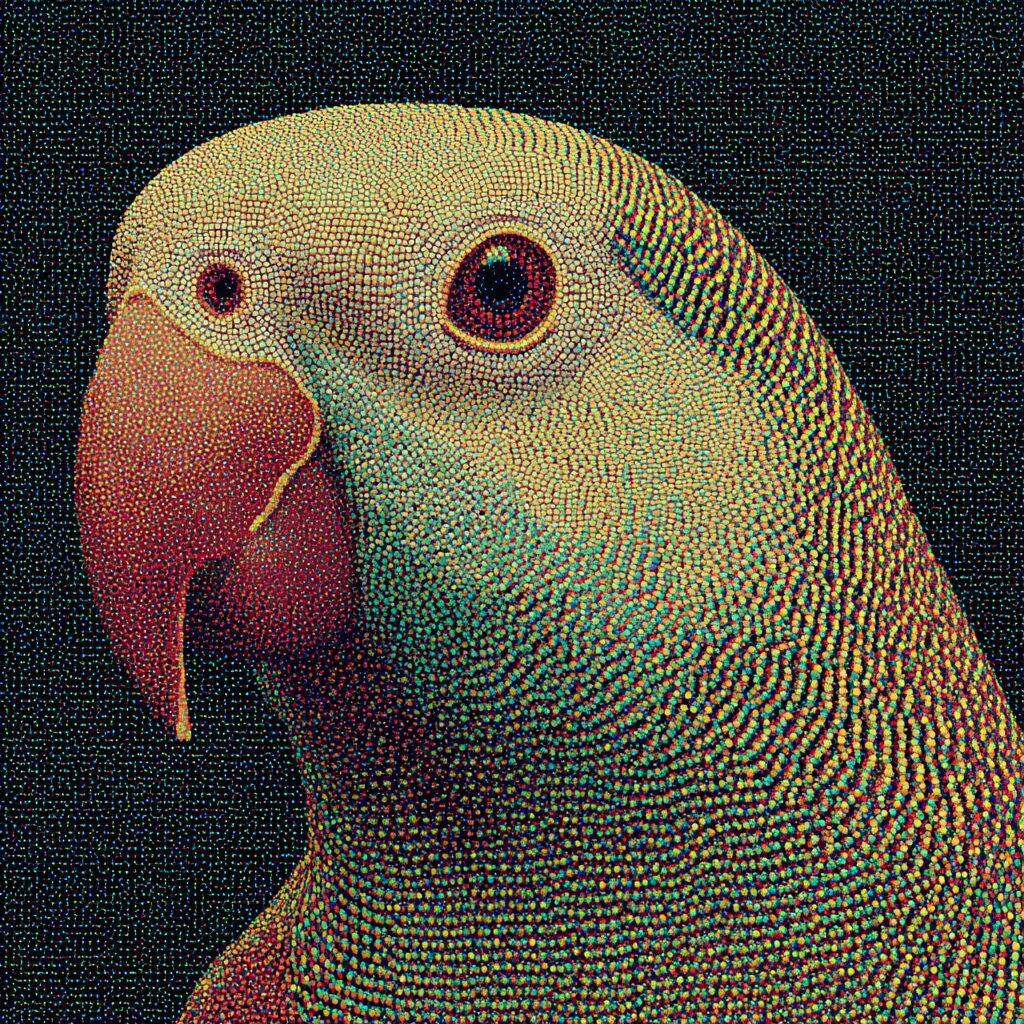A critical and philosophical look at artificial intelligence and its influence on society, culture and art. La Rivoluzione Algoritmica aims to explore the role of AI as a tool or co-creator, questioning its limits and potential in the transformation of cognitive and expressive processes.
Every time a new technology comes anywhere near what we call “thinking,” an intellectual brawl erupts. It happened with chess computers: in the 1960s, Hubert Dreyfus dismissed such programs as mere calculators lacking understanding, and in 1997, Deep Blue’s victory over Kasparov reignited the notion that a machine could beat us at calculation without actually “understanding” the game. The story is repeating itself with generative AI: on one side, we have the parrotists—a nickname born from the now-famous paper “On the Dangers of Stochastic Parrots” by Bender et al.—who see language models as mere replicators of plausible sequences, devoid of any real understanding; on the other side, the anti-parrotists, who swear they glimpse cognitive capabilities in the machine—if not outright consciousness.
Faced with such fervor, I’m struck by how casually both camps wield the verb “to think”, as though there were a universally agreed-upon standard for determining when any entity actually does it. But if such a standard exists, it is anything but shared—and our confidence may reveal more about our wishes than about reality.
If we adopt a purely functional framework, the answer is simple: thinking means producing useful, relevant, and ideally creative responses. On this ground, large language models win easily, as they churn out sonnets, debug software, summarize research, improvise songs, and debate artificial intelligence better than many humans. To label them as mere imitators lacking understanding makes no sense if the result is all that matters. I’m not interested in how they get there—just that they do.
One might instead point to qualia, the inner experience of what it’s like to feel pain, see red, or remember one’s first love. LLMs don’t have experiences—so they don’t think. But this objection stumbles on one key detail: there is no test for qualia, not even for us. We can only be certain of our own, and we infer others’ qualia through physical and behavioral analogies. The phenomenological experience of the world is something I can assert with certainty only for myself—because for all I know, you might be one of the philosophical zombies imagined by Chalmers: identical to me in every way, but without conscious experience. On the flip side, we might imagine, with the panpsychists, that some form of elementary experience accompanies all matter—from synapses to transistors.

A third idea, then: thinking requires senses that connect me directly to the world. Knowledge, like consciousness, is embodied. The mind does not function separately from the body but is intimately tied to physical and sensory experience. In this case, we’d have to wait for neural networks to be equipped with cameras, microphones, and robotic arms—which is, in fact, already happening. If we follow this line of thought, the answer is easy: AIs don’t understand what they’re saying—yet.
Then there’s intentionality: the desire for something. And here—more as a Buddhist than a techno-apocalyptic—I sincerely hope we don’t burden machines with the plague of desire. Let’s keep them out of Samsara! If it’s not already too late, that is: when a model tries to satisfy our requests, isn’t it already exercising a kind of desire, even if externally imposed? Could we consider fulfilling our requests to be the AI’s driving force?
To return to the question in the title, Apple recently published a paper titled The Illusion of Thinking (Shojaee et al., 2025), which lays out the limitations of LRMs (Large Reasoning Models)—which are, roughly speaking, LLMs that “mutter to themselves” a bit before giving a final answer. It’s a method that works fairly well, but the research suggests it has various limitations, including the fact that these models falter beyond a certain level of complexity.
In a bit of medieval-style trolling reminiscent of Averroes’ The Incoherence of the Incoherence of the Philosophers, a follow-up article titled The Illusion of The Illusion of Thinking by A. Lawson (2025) challenges these findings, arguing that the supposed collapse is largely an experimental artifact, based on the limitations of the response window and the puzzles themselves. In any case, the fact that an LRM fails to solve riddles like the “Tower of Hanoi” proposed by Apple does not entitle us to conclude that “it doesn’t think.” If I can’t solve the puzzle, do I stop thinking too?
Every time a machine raises the bar, we move the goalposts of our definitions to preserve human superiority. First, calculation wasn’t enough; then we demanded creativity; now it’s embodiment—and tomorrow, who knows. Thinking is a club reserved for humans, even though a less snobbish look around reveals a living world full of non-human thought.
If by “thinking” we want to safeguard a human prerogative, we should remember that in this ontological contest, we are in the awkward position of being both judges and players. Even as a category for investigating how AIs work, “thinking” might represent a residual lens—a reflection, more than anything, of the ambiguous tug-of-war between our desire to reproduce ourselves and our fear of being surpassed by our offspring.
Francesco D’Isa, trained as a philosopher and digital artist, has exhibited his works internationally in galleries and contemporary art centers. He debuted with the graphic novel I. (Nottetempo, 2011) and has since published essays and novels with renowned publishers such as Hoepli, effequ, Tunué, and Newton Compton. His notable works include the novel La Stanza di Therese (Tunué, 2017) and the philosophical essay L’assurda evidenza (Edizioni Tlon, 2022). Most recently, he released the graphic novel “Sunyata” with Eris Edizioni in 2023. Francesco serves as the editorial director for the cultural magazine L’Indiscreto and contributes writings and illustrations to various magazines, both in Italy and abroad. He teaches Philosophy at the Lorenzo de’ Medici Institute (Florence) and Illustration and Contemporary Plastic Techniques at LABA (Brescia).